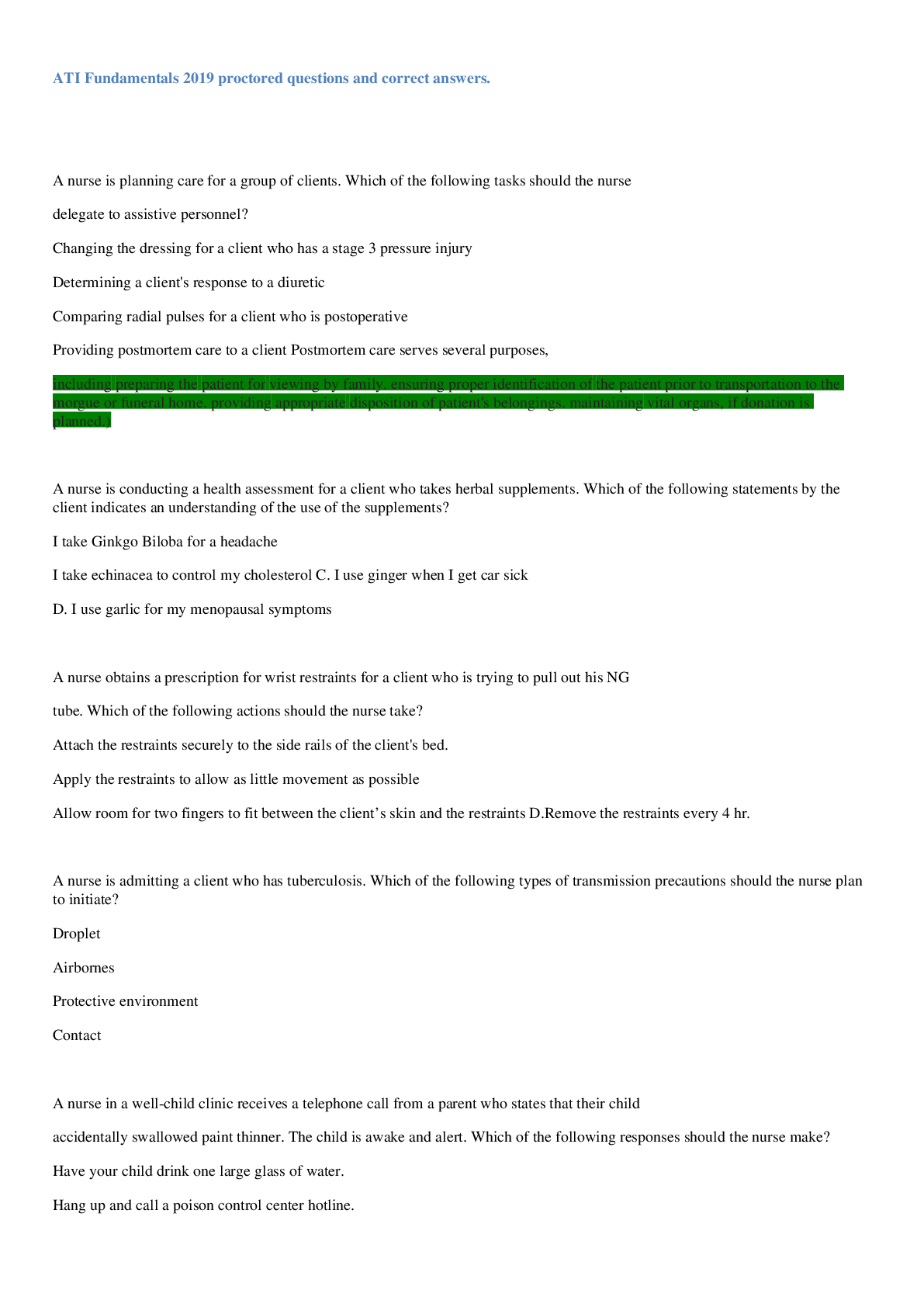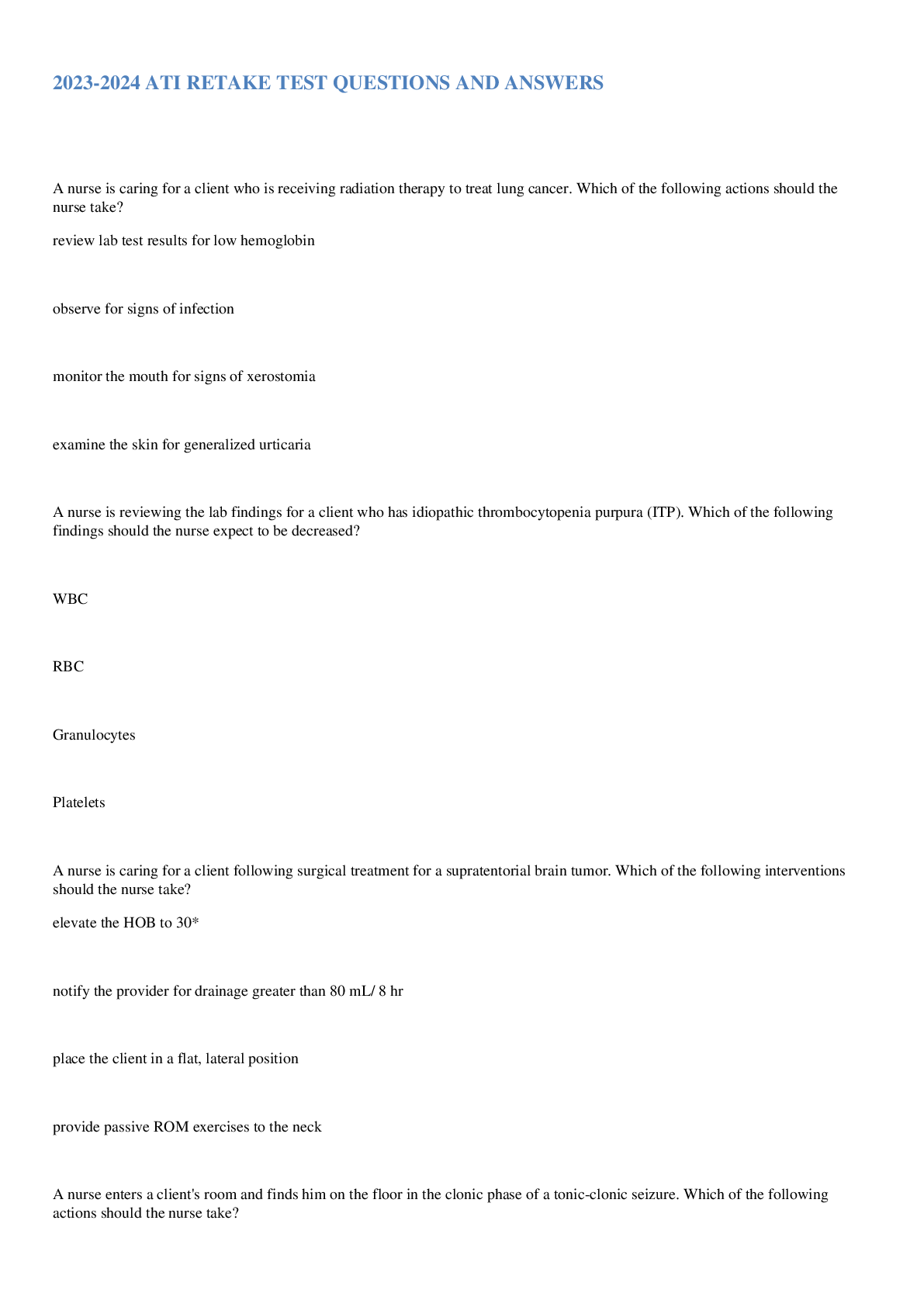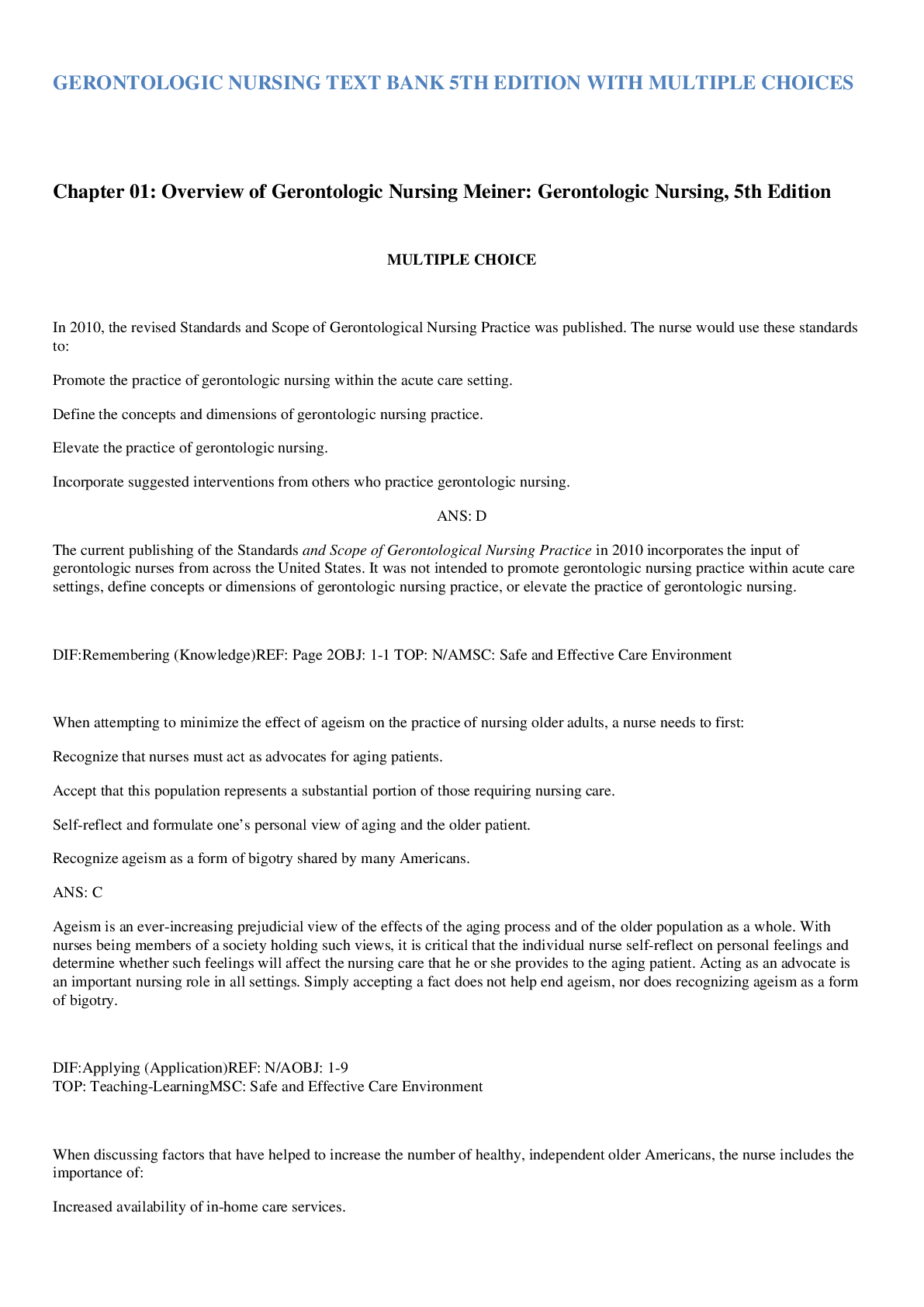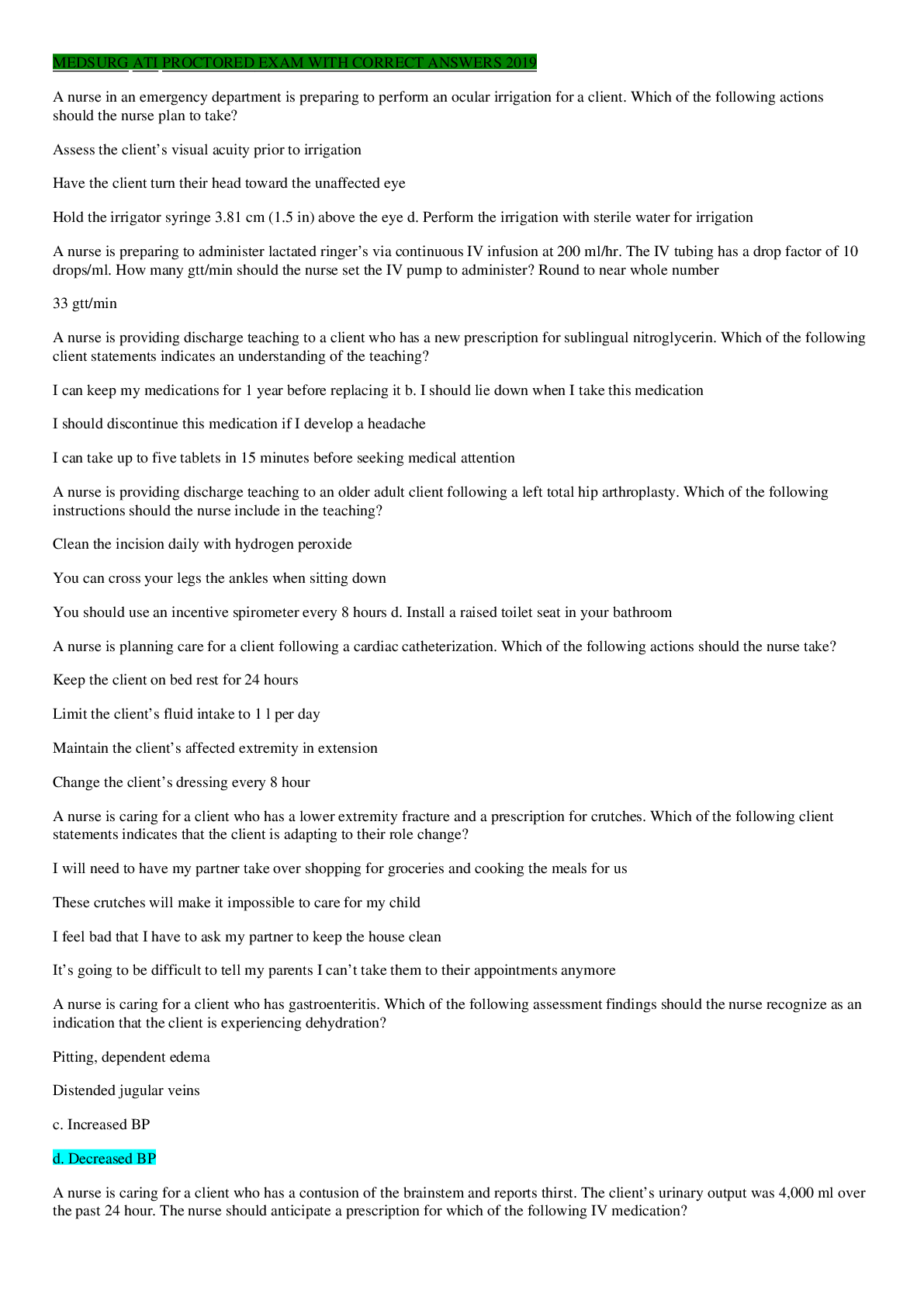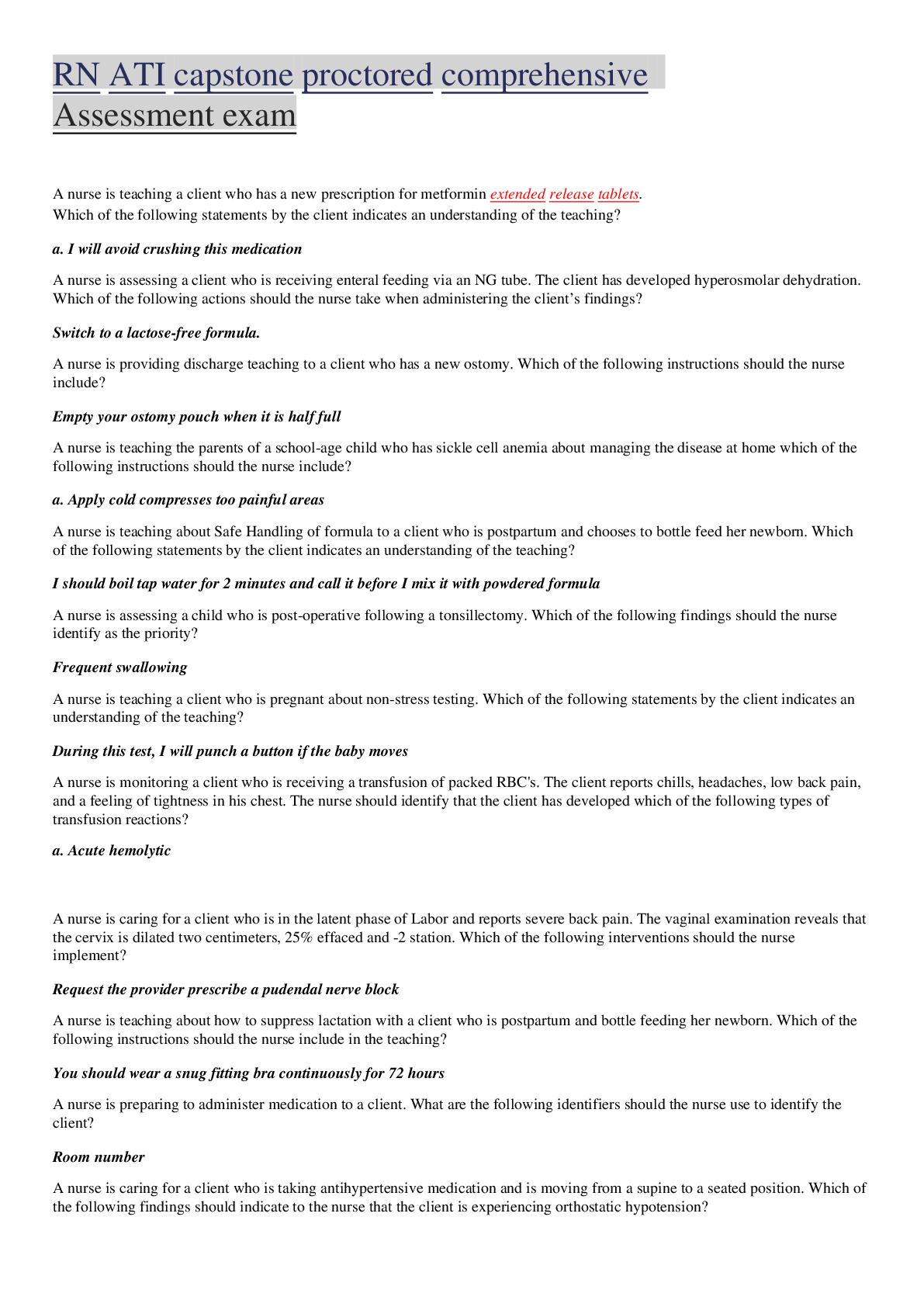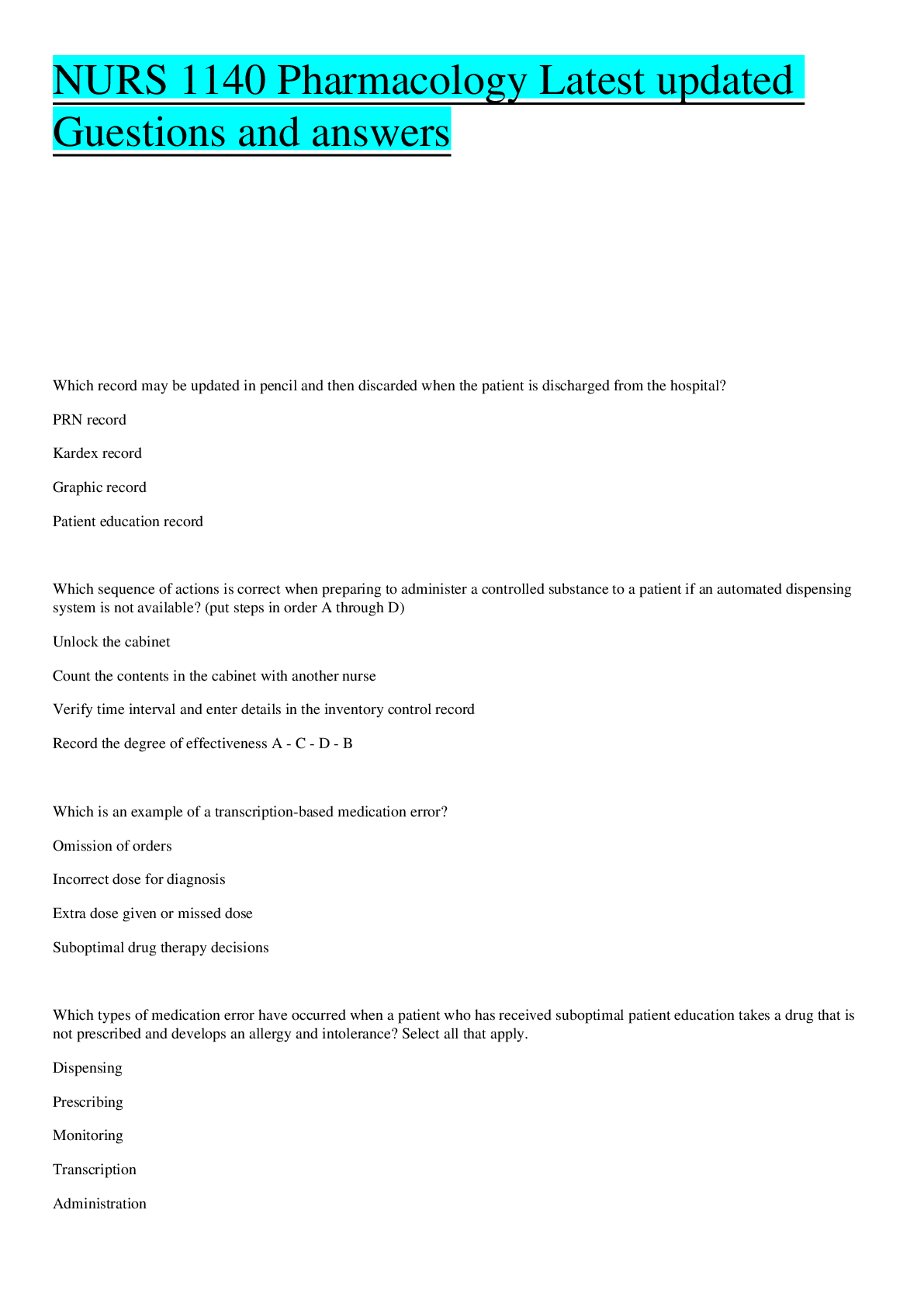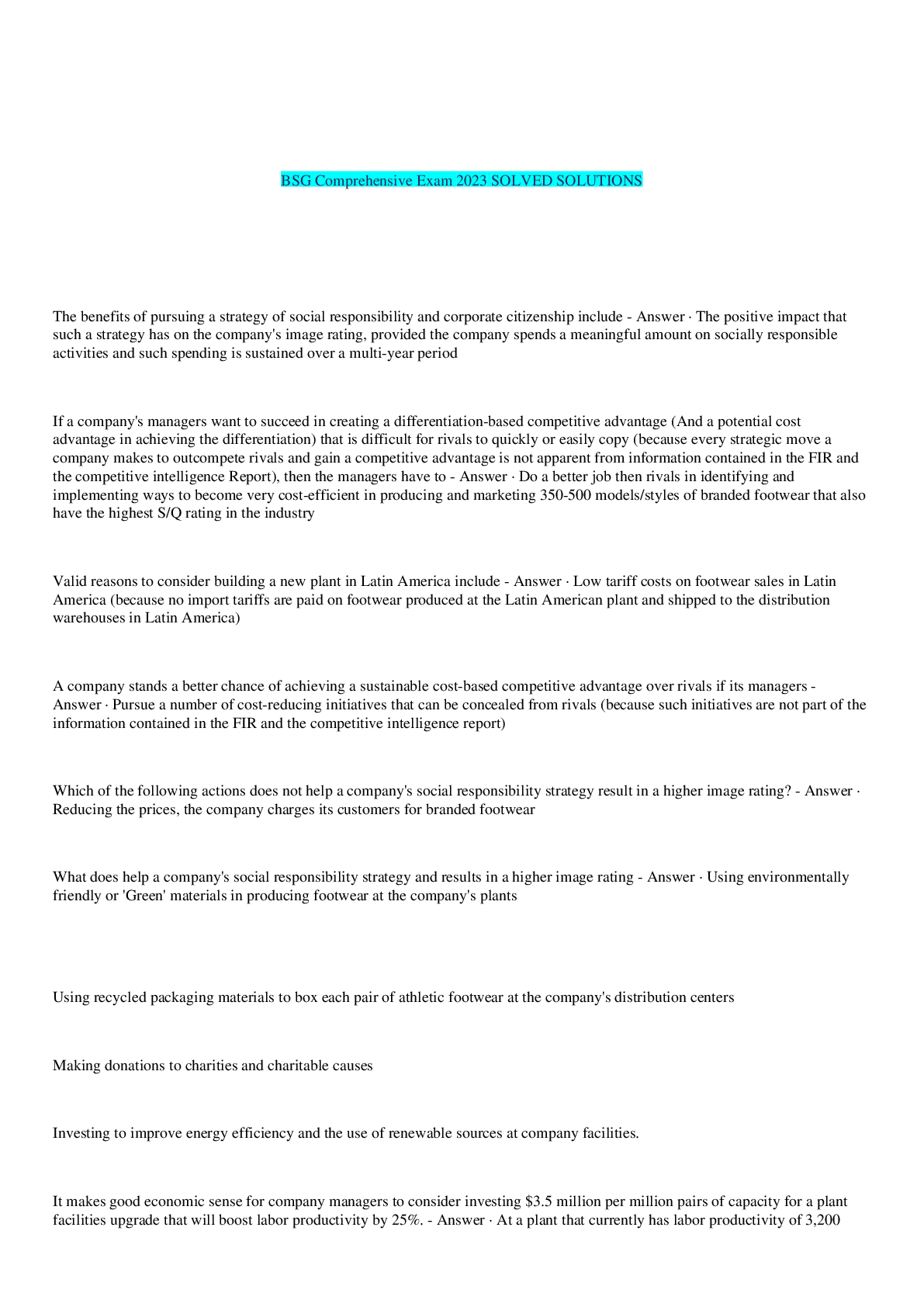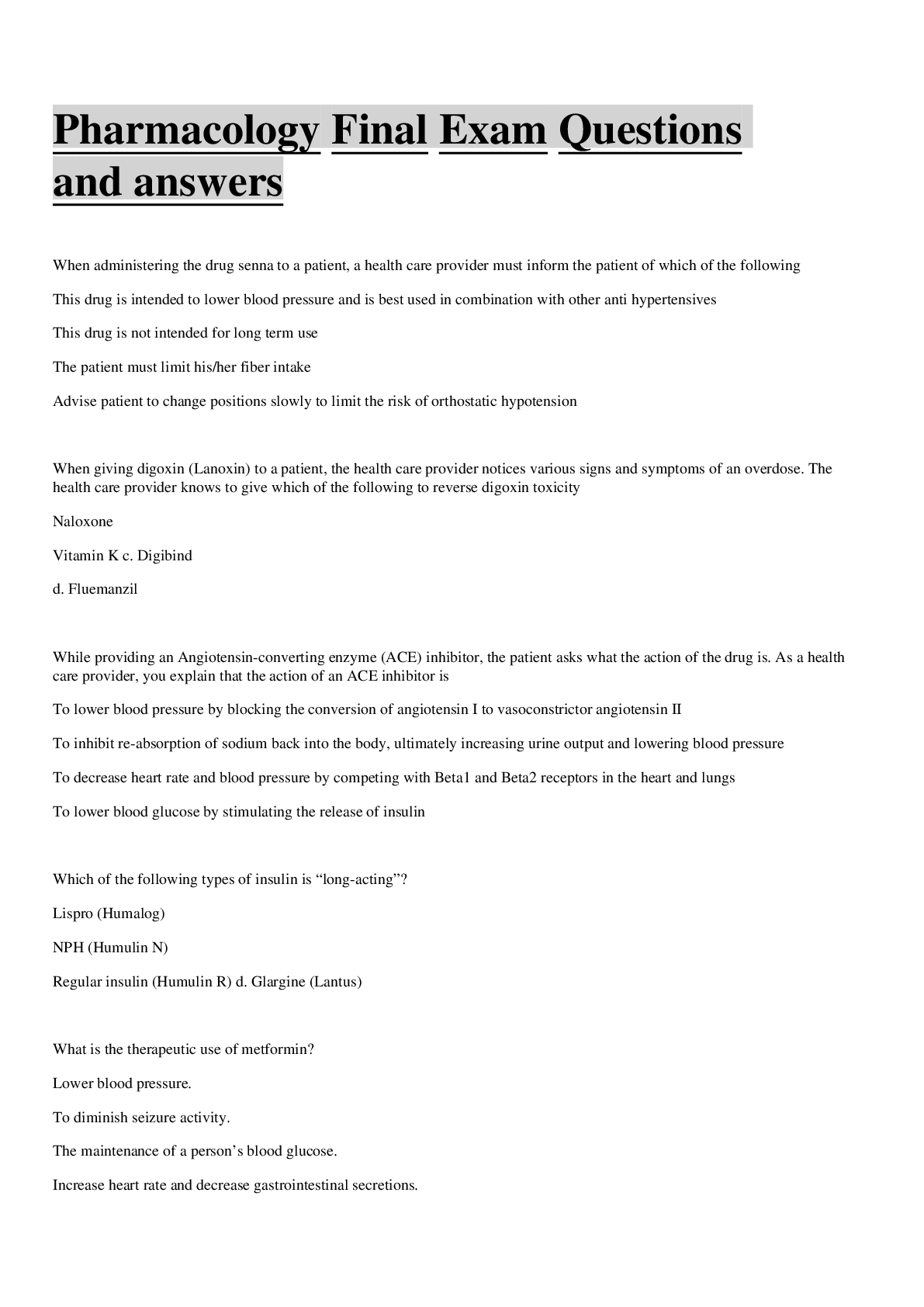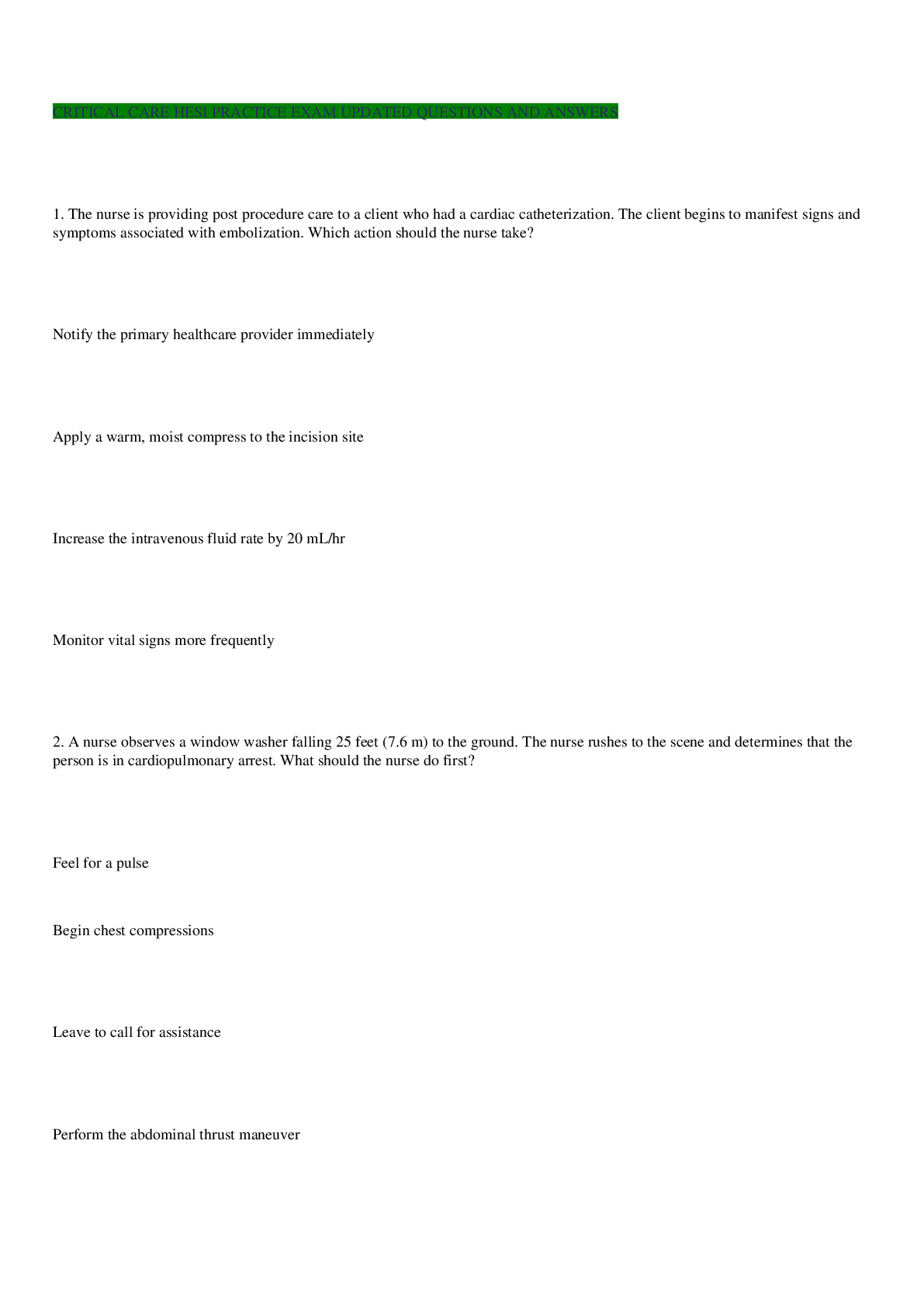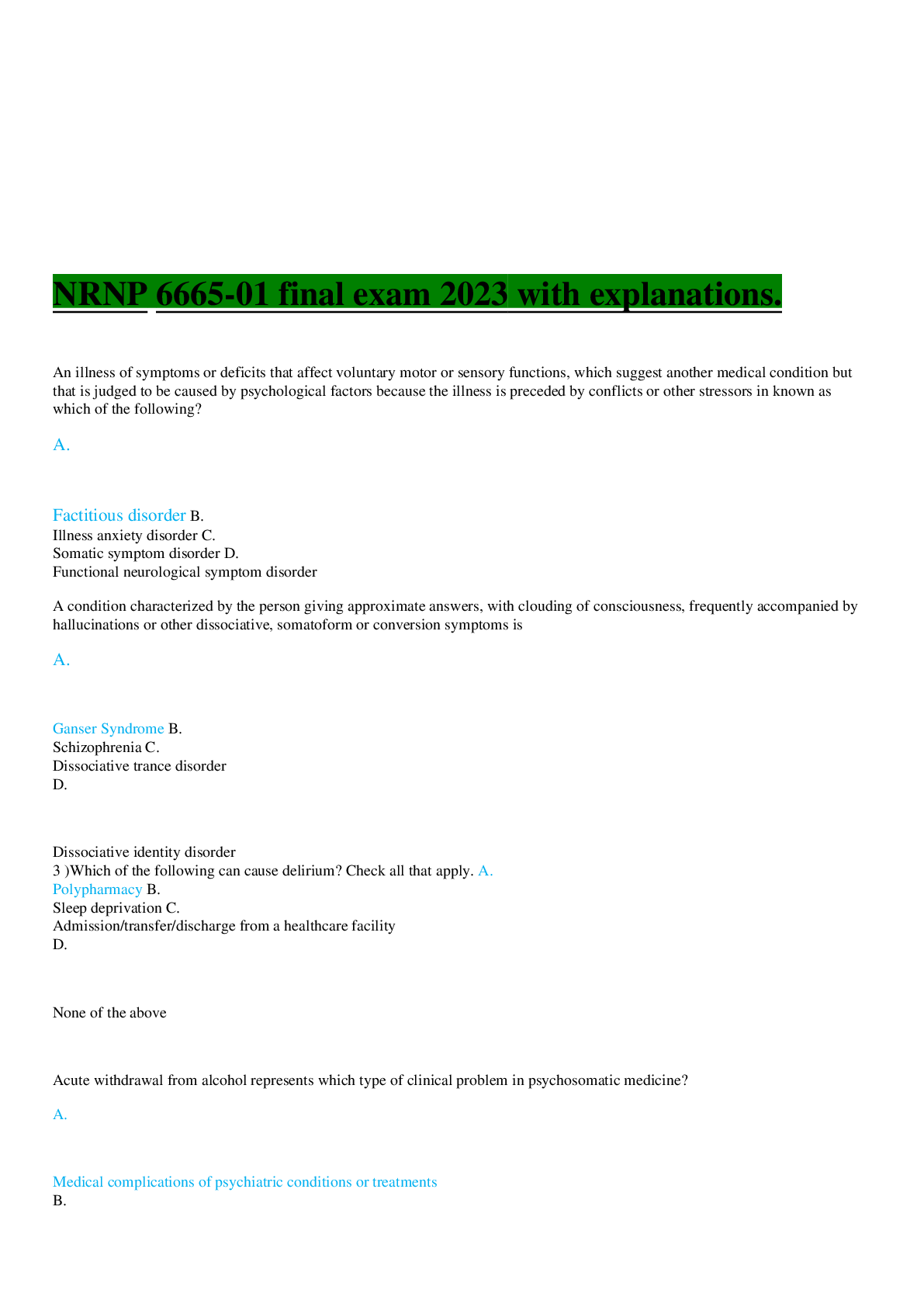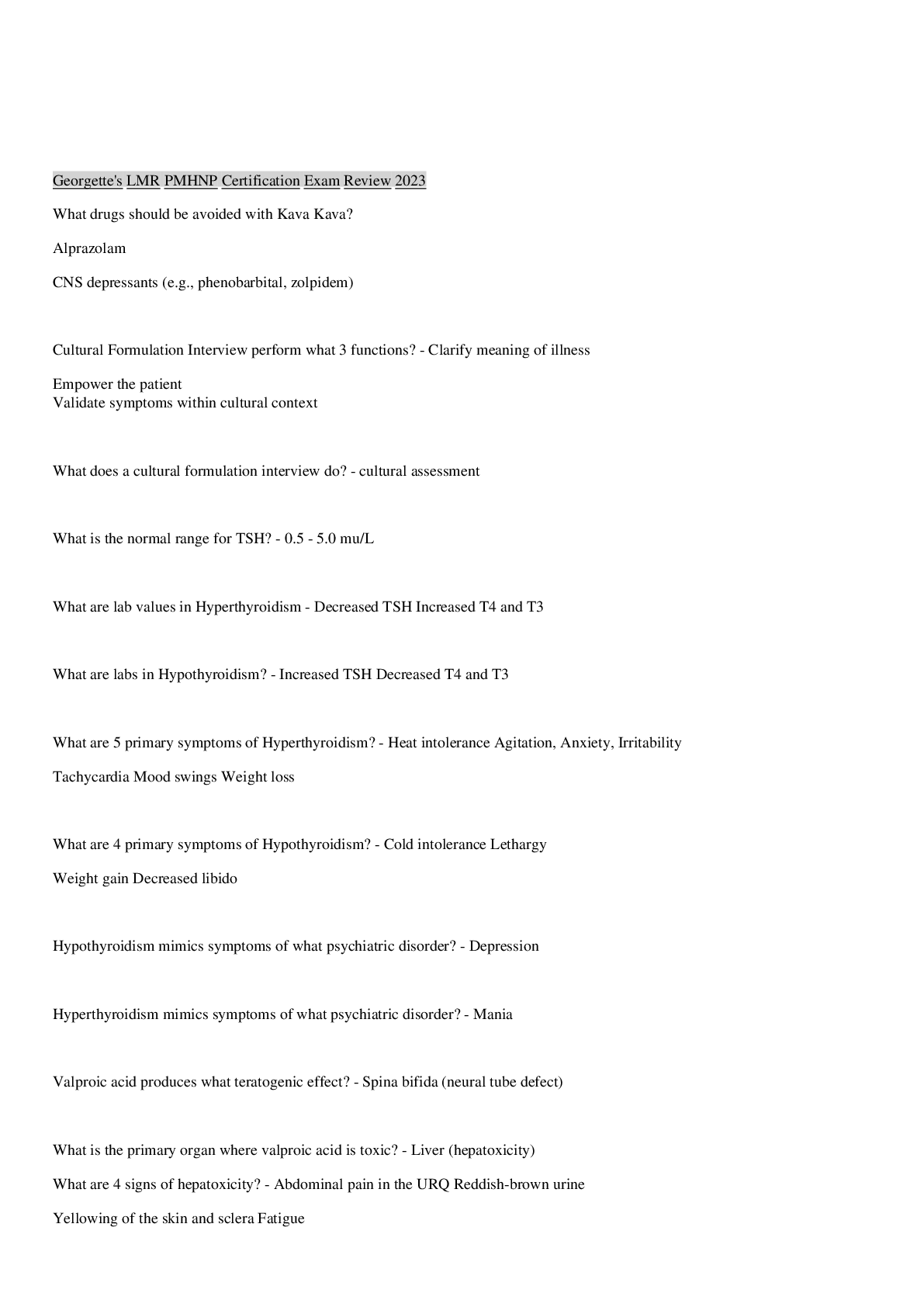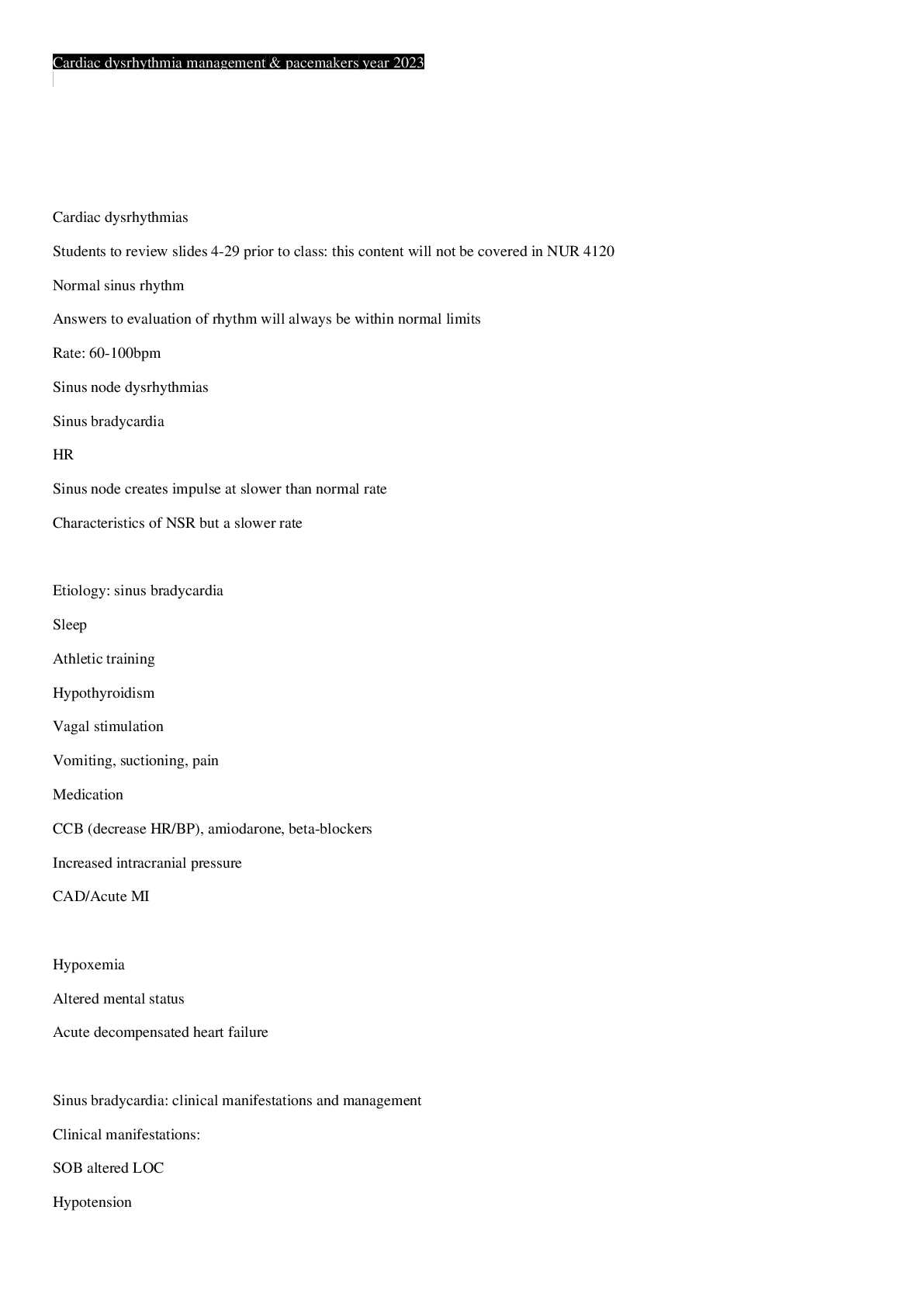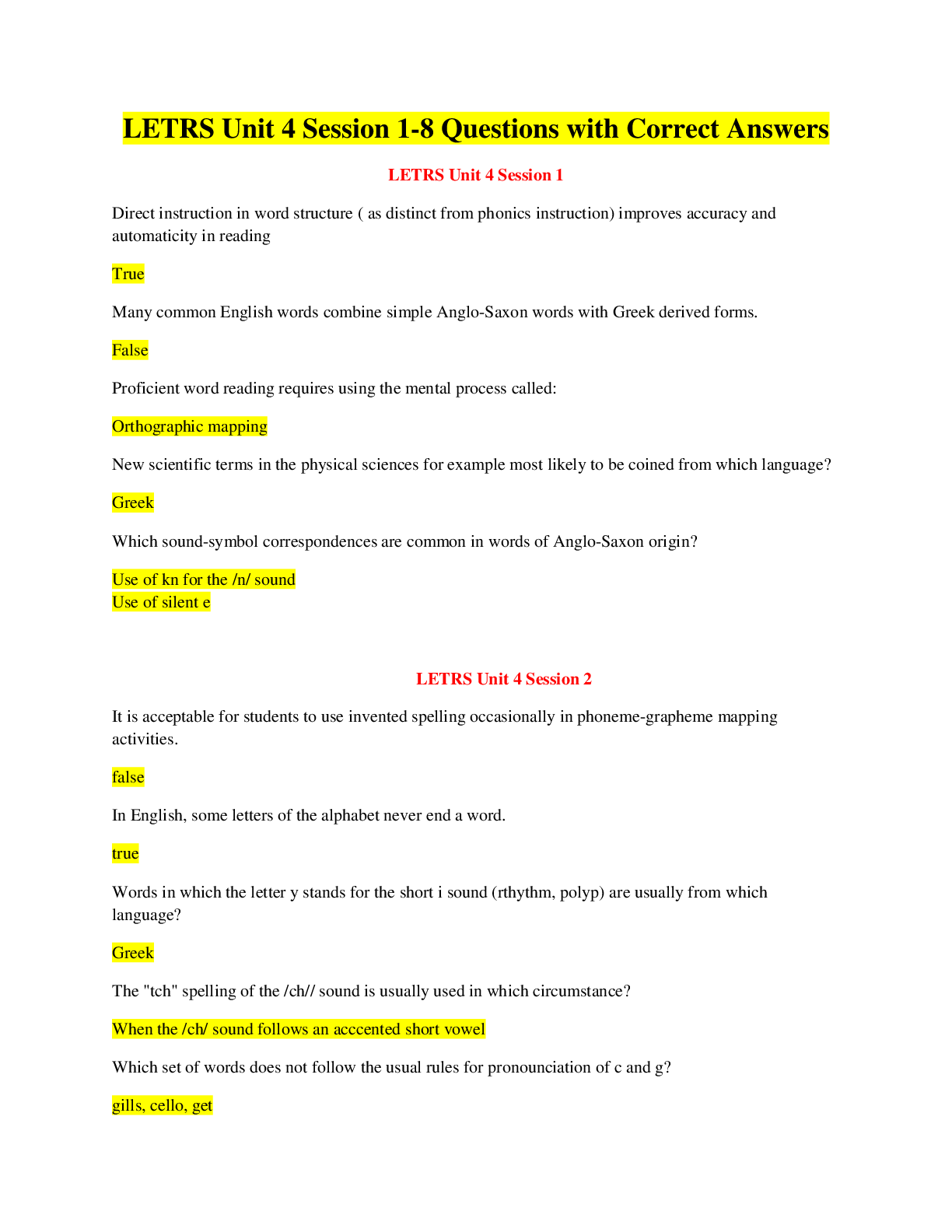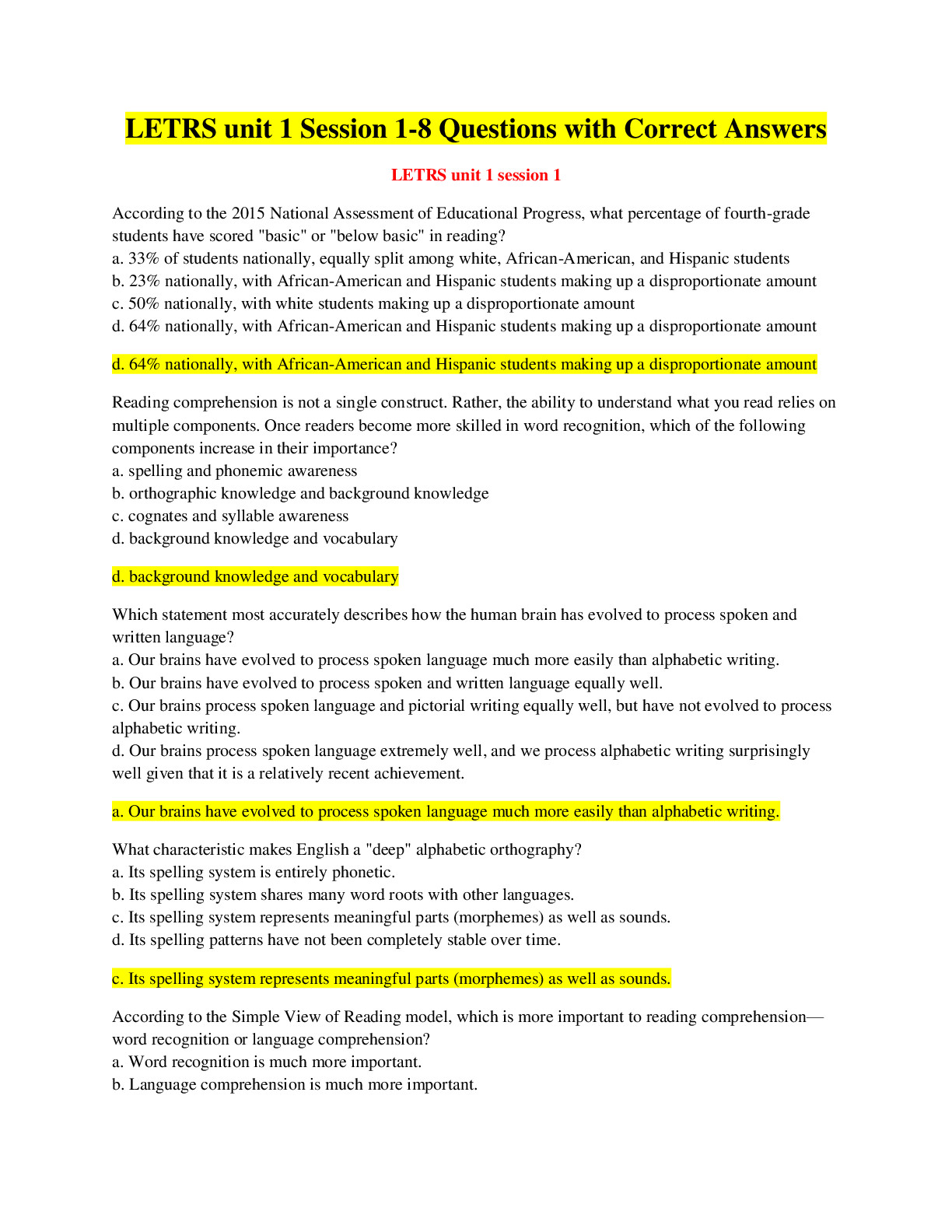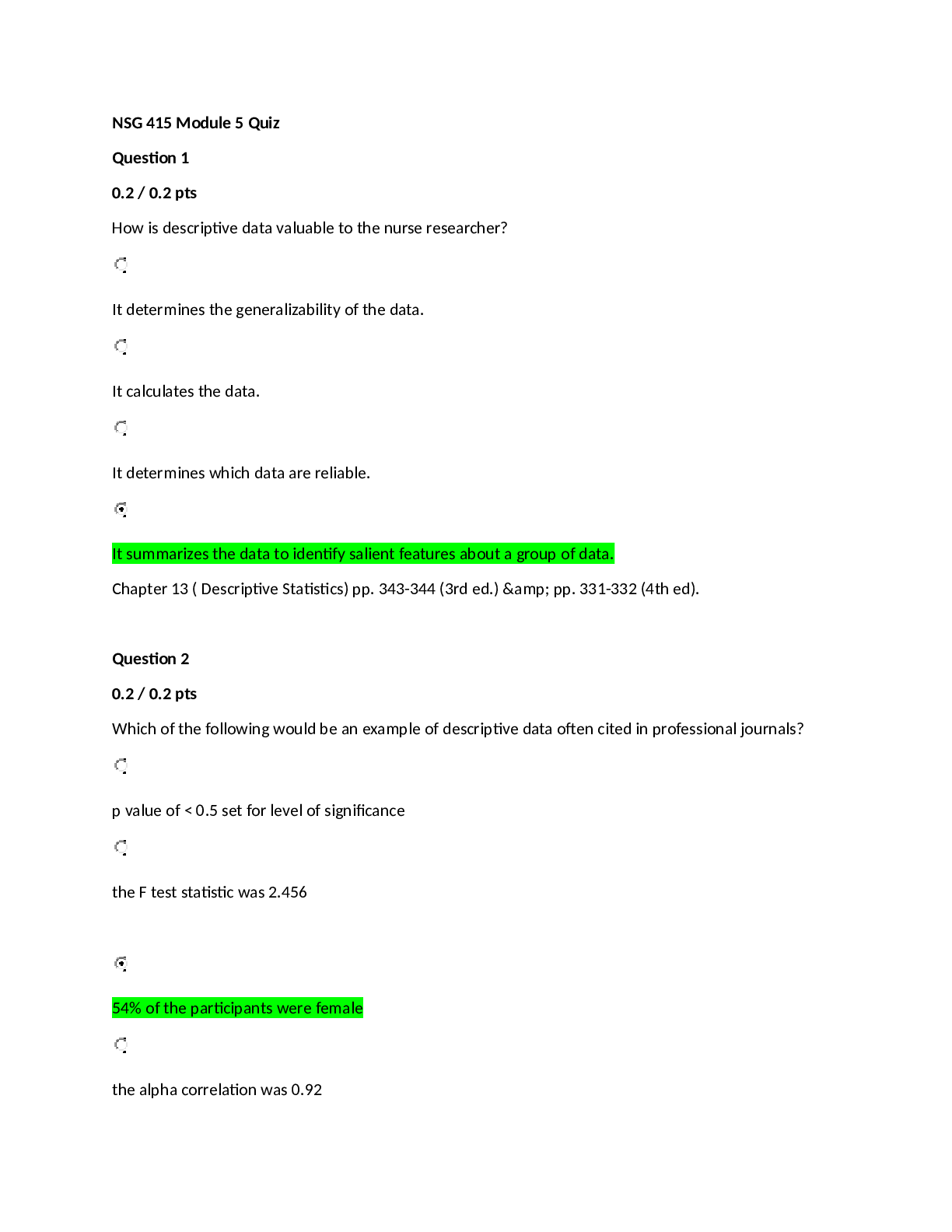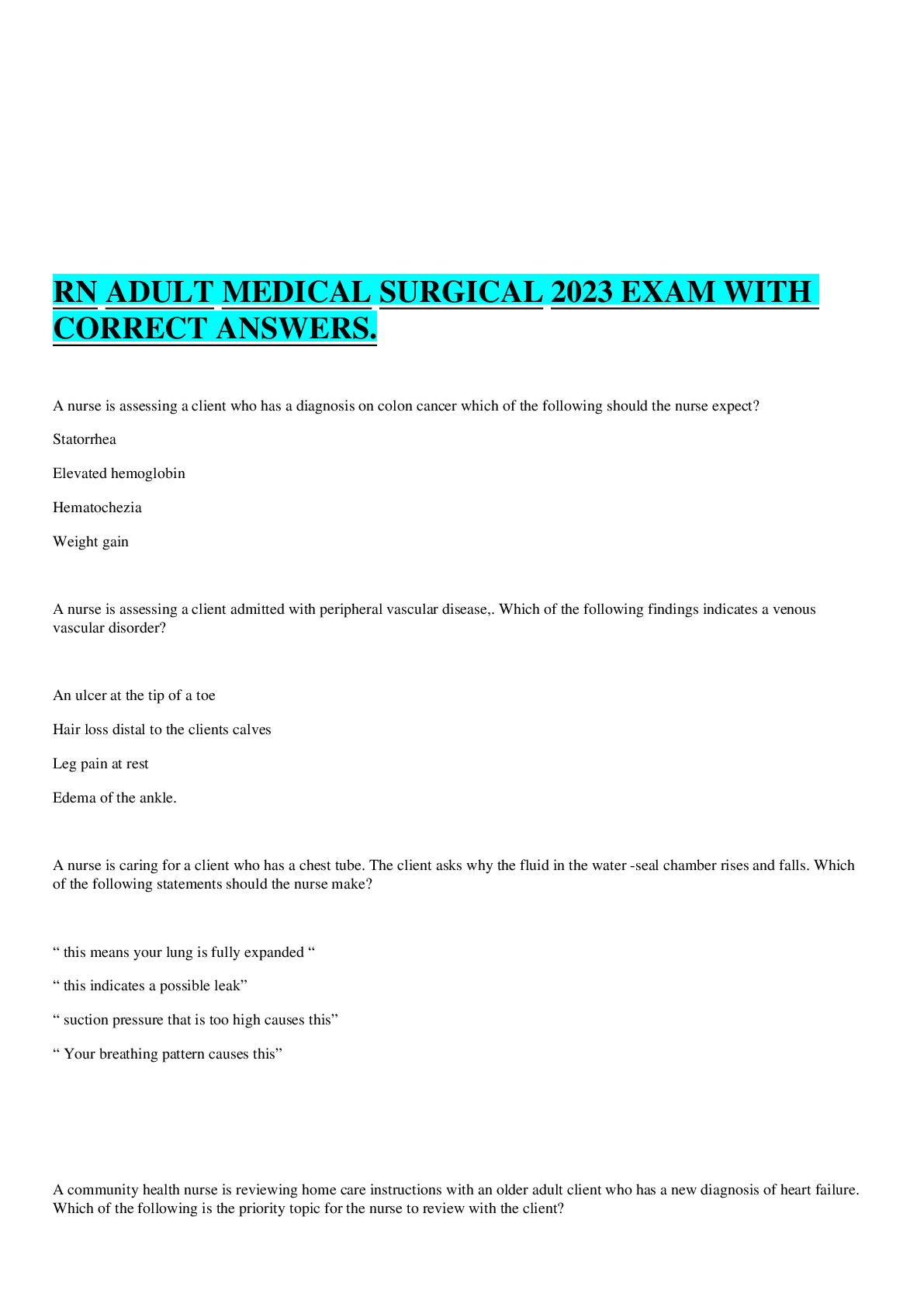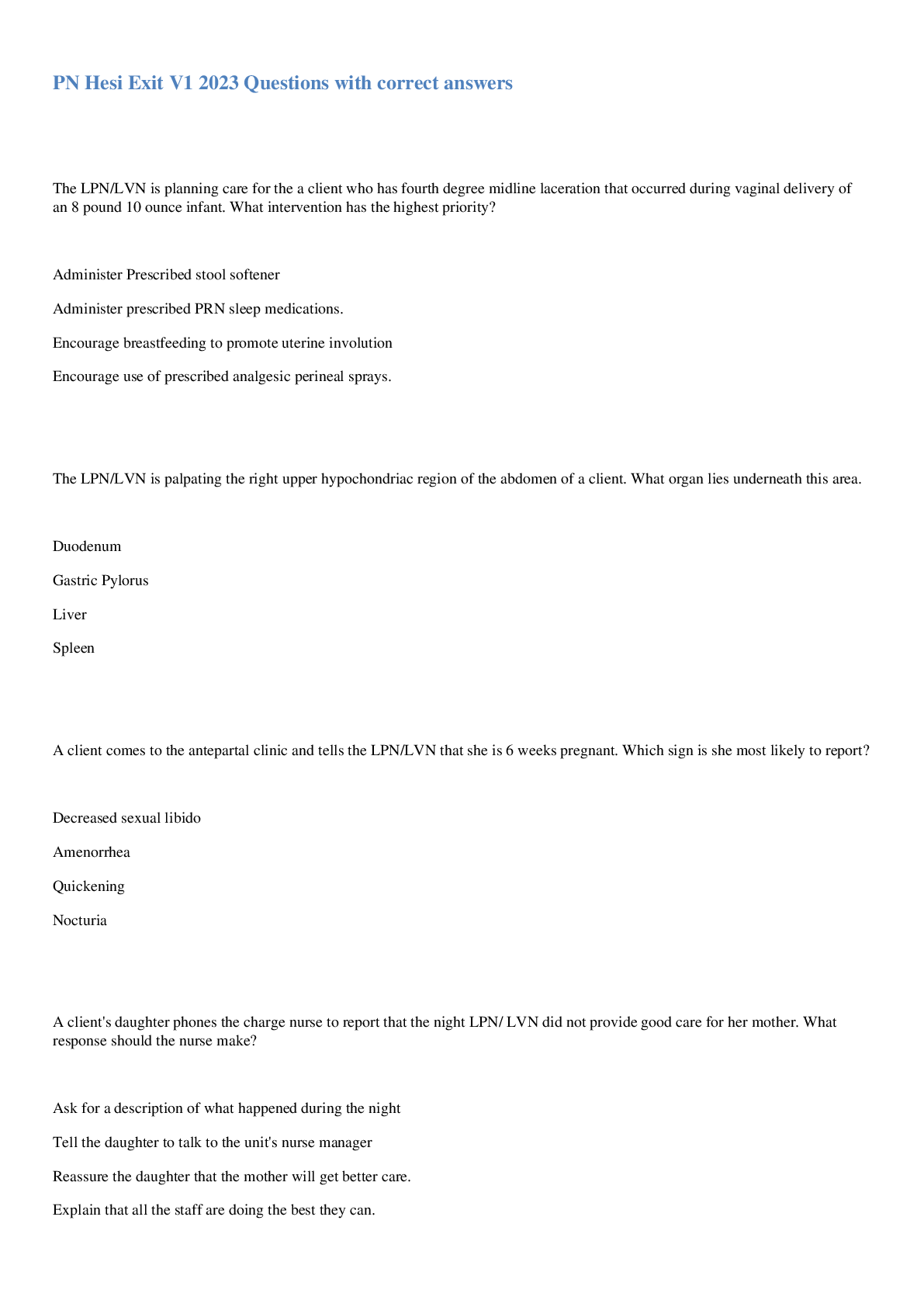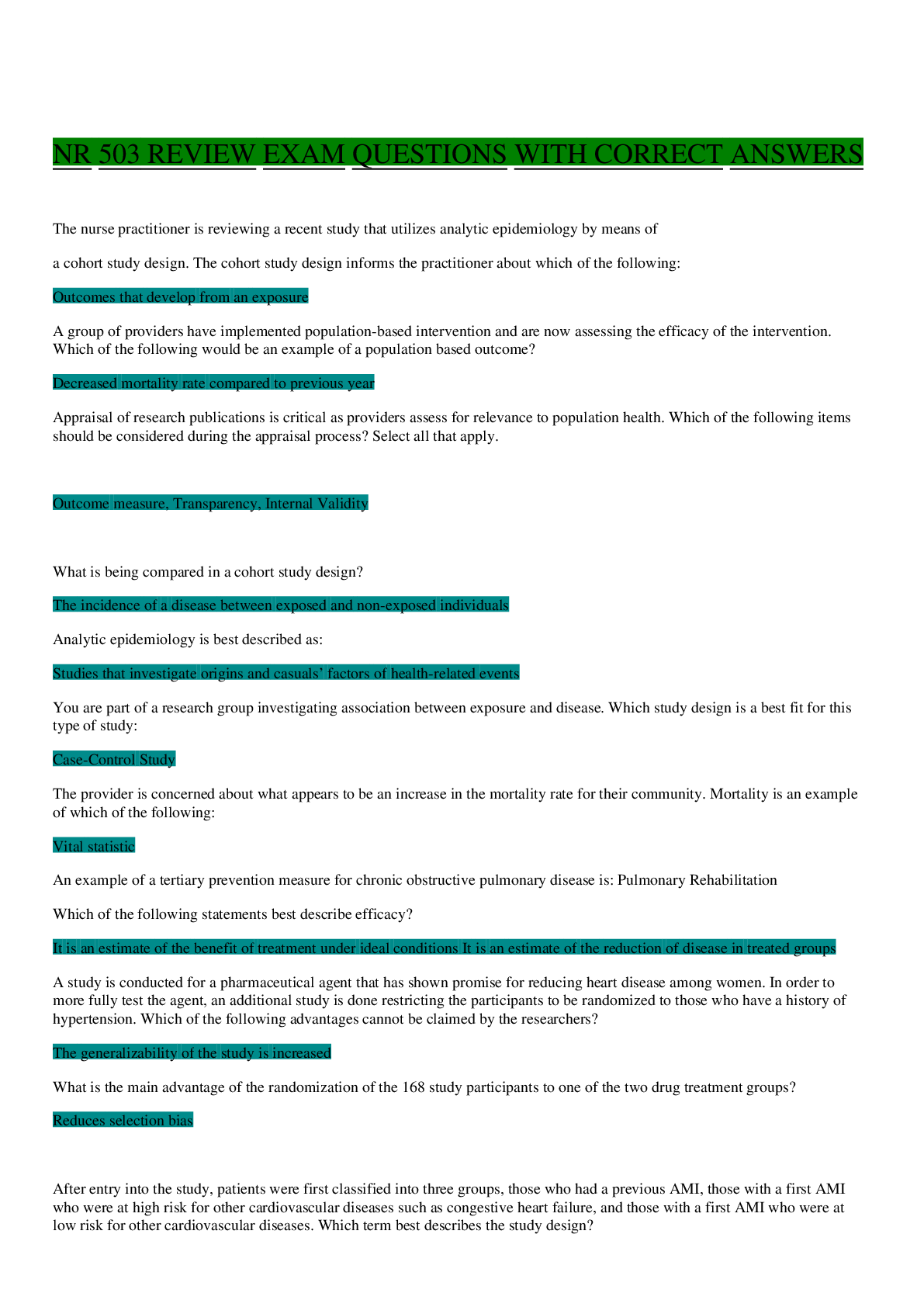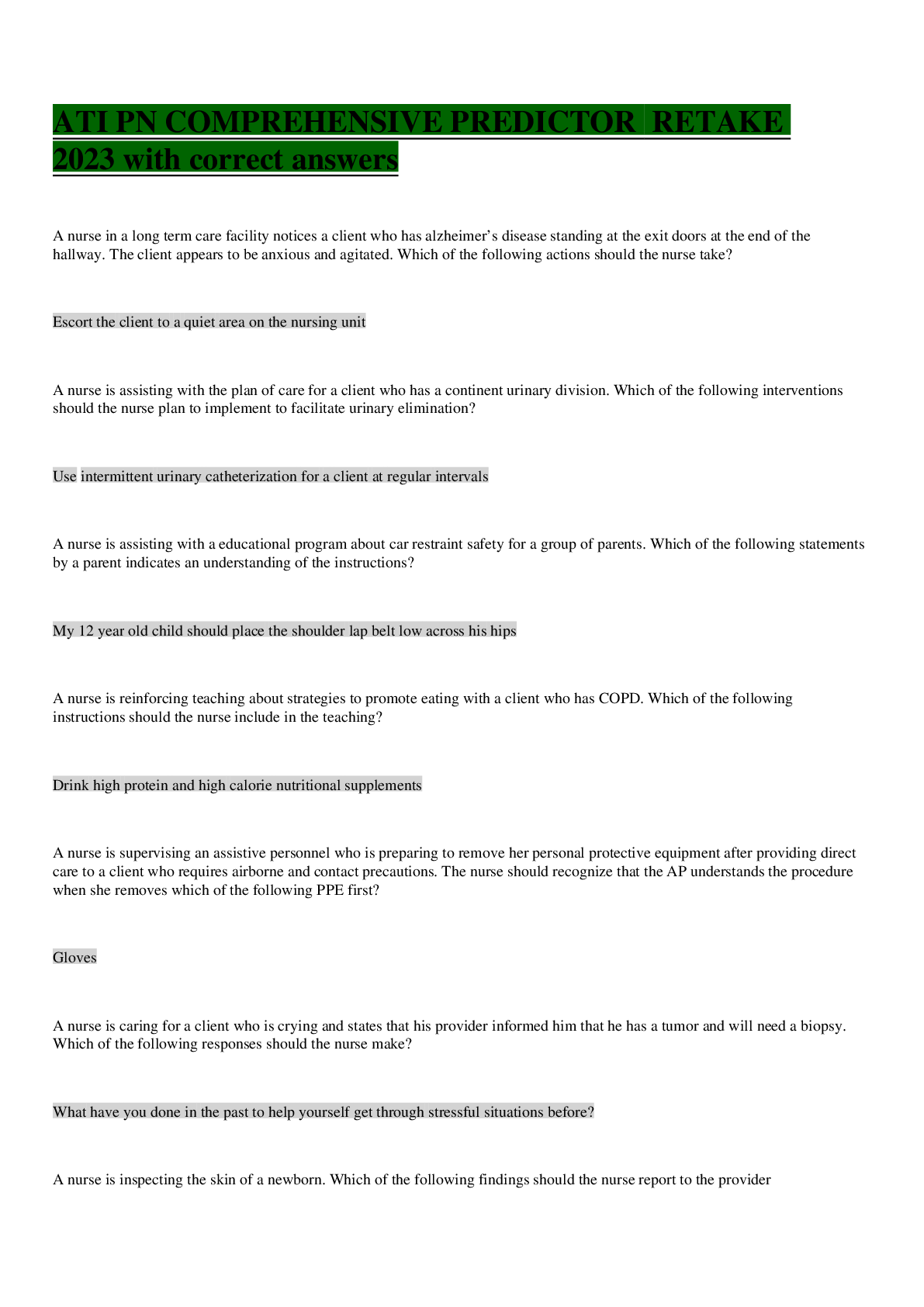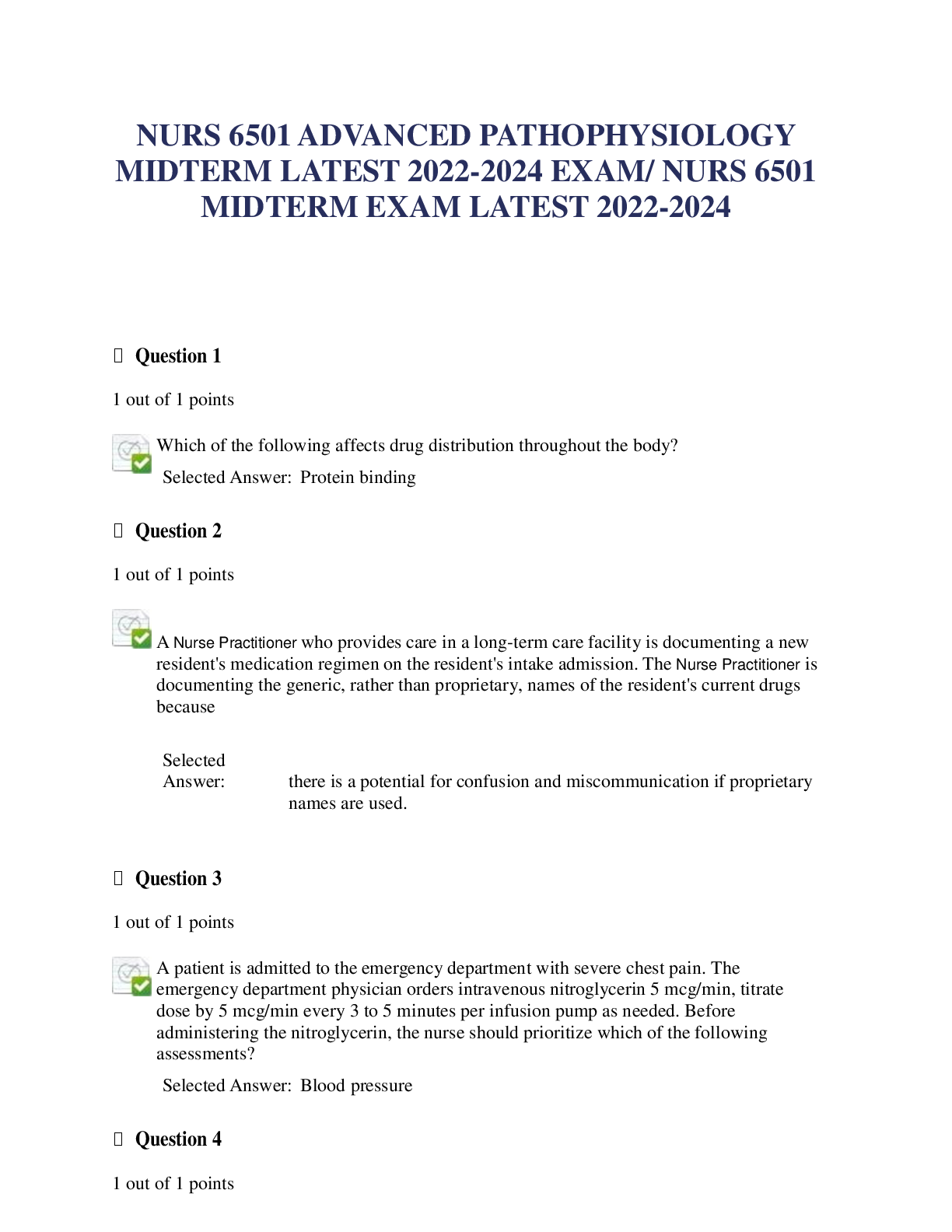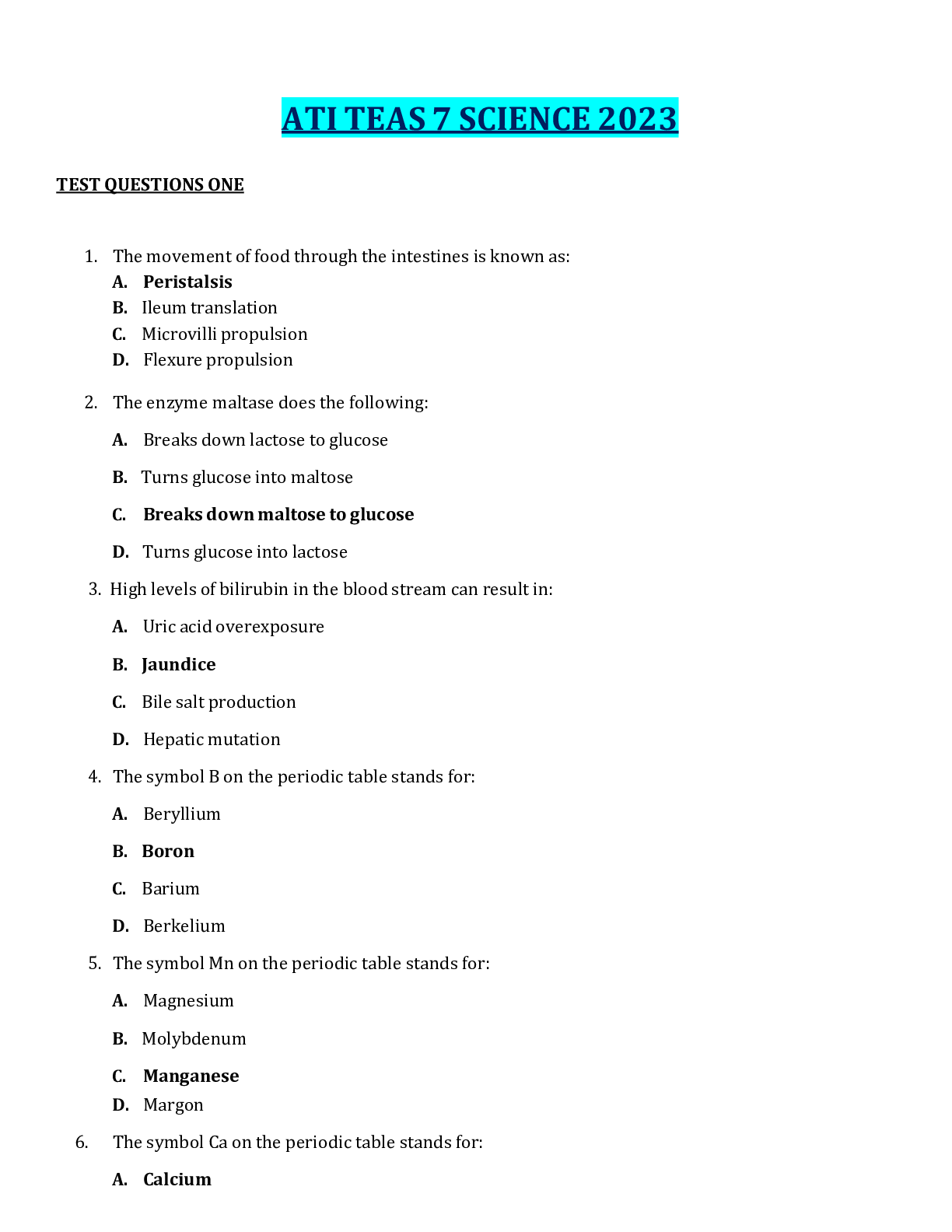NR 508 PHARM EXAM WITH CORRECT ANSWERS
Document Content and Description Below
NR 508 PHARM EXAM WITH CORRECT ANSWERS Nicotine withdrawal symptoms include: 1. Nervousness 2. Increased appetite 3. Difficulty concentrating 4. All of the above - 4. All of the above If a ... patient wants to quit smoking, nicotine replacement therapy is recommended if the patient: 1. Smokes more than 10 cigarettes a day 2. Smokes within 30 minutes of awakening in the morning 3. Smokes when drinking alcohol 4. All of the above - 2. Smokes within 30 minutes of awakening in the morning Instructions for a patient who is starting nicotine replacement therapy include: 1. Smoke less than 10 cigarettes a day when starting nicotine replacement. 2. Nicotine replacement will help with the withdrawal cravings associated with quitting tobacco. 3. Nicotine replacement can be used indefinitely. 4. Nicotine replacement therapy is generally safe for all patients. - 2. Nicotine replacement will help with the withdrawal cravings associated with quitting tobacco. Nicotine replacement therapy should not be used in which patients? 1. Pregnant women 2. Patients with worsening angina pectoris 3. Patients who have just suffered an acute myocardial infarction 4. All of the above - 4. All of the above Instructions for the use of nicotine gum include: 1. Chew the gum quickly to get a peak effect. 2. The gum should be "parked" in the buccal space between chewing. 3. Acidic drinks such as coffee help with the absorption of the nicotine. 4. The highest abstinence rates occur if the patient chews the gum when he or she is having cravings. - 2. The gum should be "parked" in the buccal space between chewing. The most common adverse effect of the transdermal nicotine replacement patch is: 1. Nicotine toxicity 2. Tingling at the site of patch application 3. Skin irritation under the patch site 4. Life-threatening dysrhythmias - 3. Skin irritation under the patch site If a patient is exhibiting signs of nicotine toxicity when using transdermal nicotine, they should remove the patch and: 1. Wash the area thoroughly with soap and water. 2. Flush the area with clear water. 3. Reapply a new patch in 8 hours. 4. Take acetaminophen for the headache associated with toxicity. - 2. Flush the area with clear water. When a patient is prescribed nicotine nasal spray for tobacco cessation, instructions include: 1. Inhale deeply with each dose to ensure deposition in the lungs. 2. The dose is one to two sprays in each nostril per hour, not to exceed 40 sprays per day. 3. If they have a sensation of "head rush" this indicates the medication is working well. 4. Nicotine spray may be used for up to 12 continuous months. - 2. The dose is one to two sprays in each nostril per hour, not to exceed 40 sprays per day If prescribing bupropion (Zyban) for tobacco cessation, the instructions to the patient include: 1. Bupropion (Zyban) is started 1 to 2 weeks before the quit date. 2. Nicotine replacement products should not be used with bupropion. 3. If they smoke when taking bupropion they may have increased anxiety and insomnia. 4. Because they are not using bupropion as an antidepressant, they do not need to worry about increased suicide ideation when starting therapy. - 1. Bupropion (Zyban) is started 1 to 2 weeks before the quit date. Varenicline (Chantix) may be prescribed for tobacco cessation. Instructions to the patient who is starting varenicline include: 1. The maximum time varenicline can be used is 12 weeks. 2. Nausea is a sign of varenicline toxicity and should be reported to the provider. 3. The starting regimen for varenicline is start taking 1 mg twice a day a week before the quit date. 4. Neuropsychiatric symptoms may occur. - 4. Neuropsychiatric symptoms may occur. The most appropriate smoking cessation prescription for pregnant women is: 1. A nicotine replacement patch at the lowest dose available 2. Bupropion (Zyban) 3. Varenicline (Chantix) 4. Nonpharmacologic measures - 4. Nonpharmacologic measures Common mistakes practitioners make in treating anxiety disorders include: 1. Switching medications after an 8- to 12-week trial 2. Maximizing dosing of antianxiety medications 3. Encouraging exercise and relaxation therapy before starting medication 4. Thinking a partial response to medication is acceptable - 4. Thinking a partial response to medication is acceptable An appropriate first-line drug to try for mild to moderate generalized anxiety disorder would be: 1. Alprazolam (Xanax) 2. Diazepam (Valium) 3. Buspirone (Buspar) 4. Amitriptyline (Elavil) - 3. Buspirone (Buspar) An appropriate drug to initially treat panic disorder is: 1. Alprazolam (Xanax) 2. Diazepam (Valium) 3. Buspirone (Buspar) 4. Amitriptyline (Elavil) - 2. Diazepam (Valium) Prior to starting antidepressants, patients should have laboratory testing to rule out: 1. Hypothyroidism 2. Anemia 3. Diabetes mellitus 4. Low estrogen levels - 1. Hypothyroidism [Show More]
Last updated: 1 week ago
Preview 1 out of 18 pages
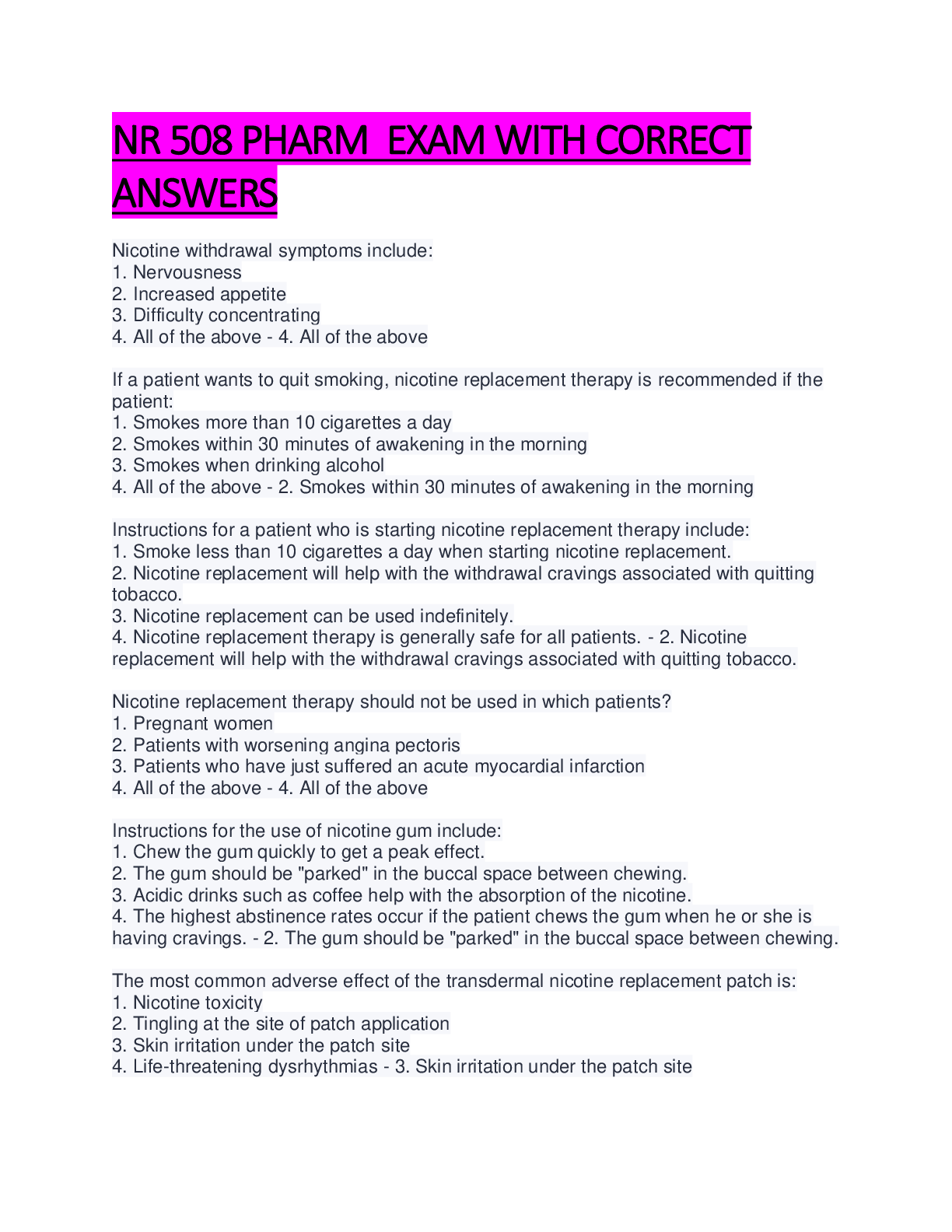
Reviews( 0 )
Document information
Connected school, study & course
About the document
Uploaded On
Apr 17, 2024
Number of pages
18
Written in
Additional information
This document has been written for:
Uploaded
Apr 17, 2024
Downloads
0
Views
8


